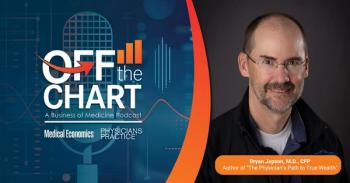
Emerging from the Valley of Physician Burnout
What intrigues me about physician burnout is its similarity to depression.
During our monthly provider meeting, the subject of work-life balance and burnout came up. It started when I mentioned that I am interested in starting group visits for patients with anxiety. We soon were discussing the role of group “visits” (meetings) for physicians to discuss burnout, overwhelming roles, disillusionment, and anxiety. One of my colleagues verbalized that unless she herself is addressing her own distress, she is not going to be helpful to her patients. Physician, heal thyself.
About two and a half years ago, I started my own path towards burnout. I reached nearly the end of that path before I realized what was happening. It’s easy to blame schedules or temporary frustrations for the stress or fatigue or anger or anxiety we are feeling.
My burnout grew and grew, slowly engulfing much of what I used to love about teaching and practicing medicine. I remembered what it was like to be excited about pouring myself into my teaching role. I remembered what it felt like to know at the end of a clinic session that you did a really good job for your patients that day. I remembered coming to work excited, happy, in love with what I was doing. I lost all of that, slowly, piece-by-piece. Once it was gone, I couldn’t figure out how to get it back.
I slept eight hours a night, ate right, exercised, did yoga, read books, off-loaded responsibilities, spent quality time with my family, found people I could talk to. In short, I did everything I was supposed to when it came to treating and preventing burnout. What ended up “curing” me was actually something that much of the literature warns you not to do - make a big change.
For me, leaving my job and academic medicine in favor of a more lifestyle-friendly private practice job did what no amount of stress management techniques could do. It erased much of what I had come to dread about my job, allowing me to focus my time and energy on what I still found some joy doing - treating patients. I gained an extra “day off” each week, allowing me to become more involved in my family’s life in a way that tipped the scales towards balance.
What intrigues me about physician burnout is its similarity to depression. You start down this hill, descending ever so slightly each day until you find yourself in a valley and cannot even see where you started from. By the time you get there, you don’t know how to get back. When I treat patients with depression, they often come to me in this valley, stating “I just want to feel like me again.” Slowly, with treatment, they emerge. Ideally, they look at you with a smile a few months later and tell you “I feel like myself, like the old me.”
The other parallel with depression is the recognition with future episodes of where you’re headed. Patients often tell me “it’s starting again.” After a month or a year or a decade off of their antidepressant, the cycle is starting again. Only this time, they’re not in the valley yet. They’ve been on this path before and know where it’s headed. They know to get help before it gets worse.
Burnout similarly drags you slowly down to a valley where all is dark and unsettled. You can’t see where you came from or how to get out. However, it is treatable, fixable, curable, and the next time you start to feel those feelings - being stressed or overwhelmed or utterly fatigued - you know where it’s headed and you can choose a different path. Physician, heal thyself.
Find out more about Jennifer Frank and our other
Newsletter
Optimize your practice with the Physicians Practice newsletter, offering management pearls, leadership tips, and business strategies tailored for practice administrators and physicians of any specialty.













